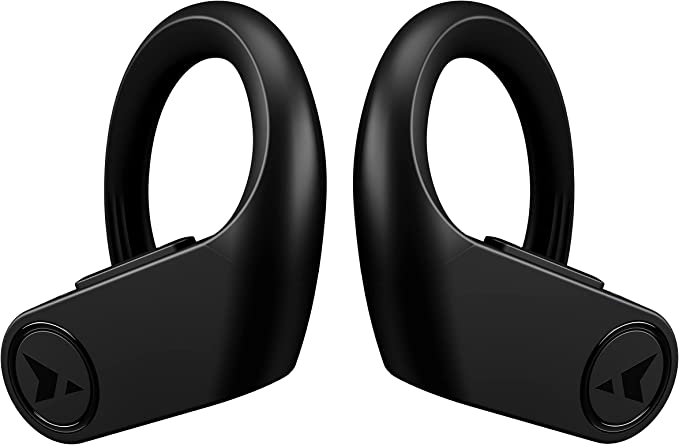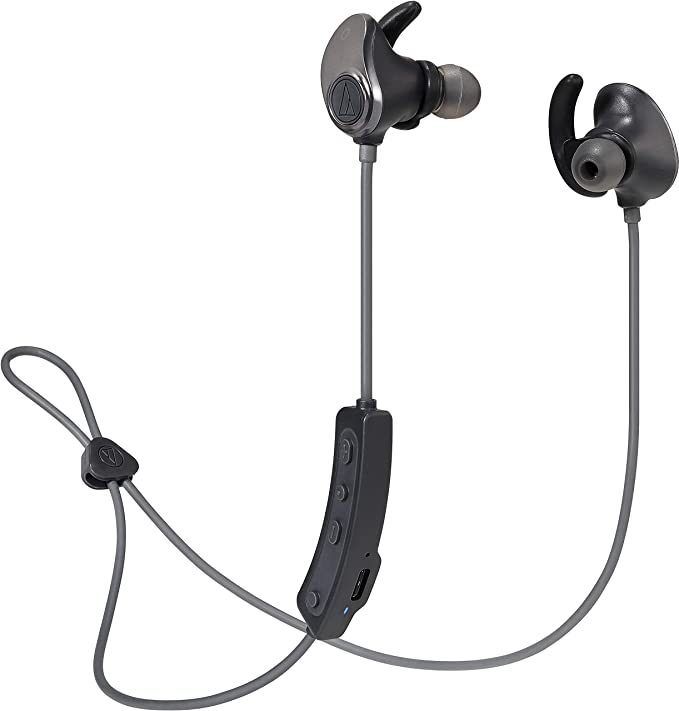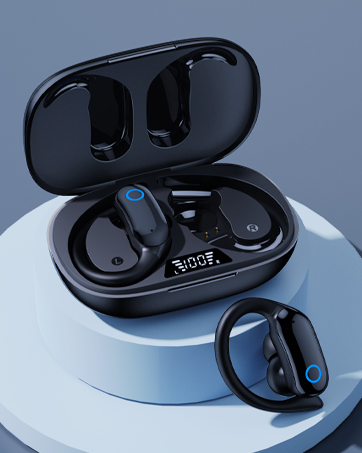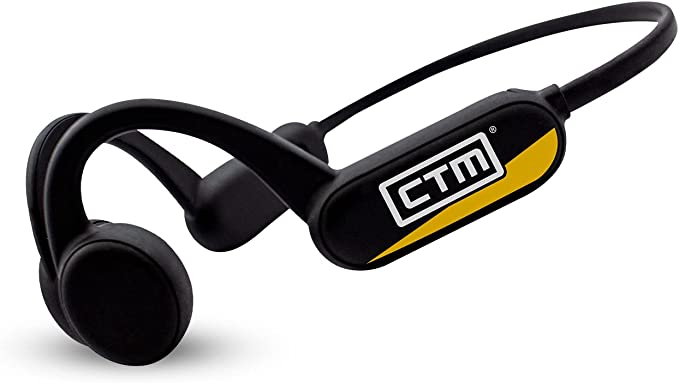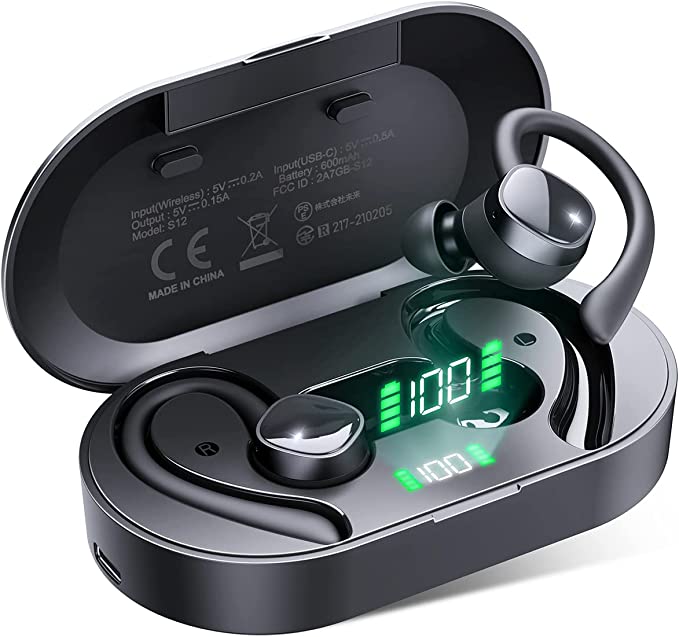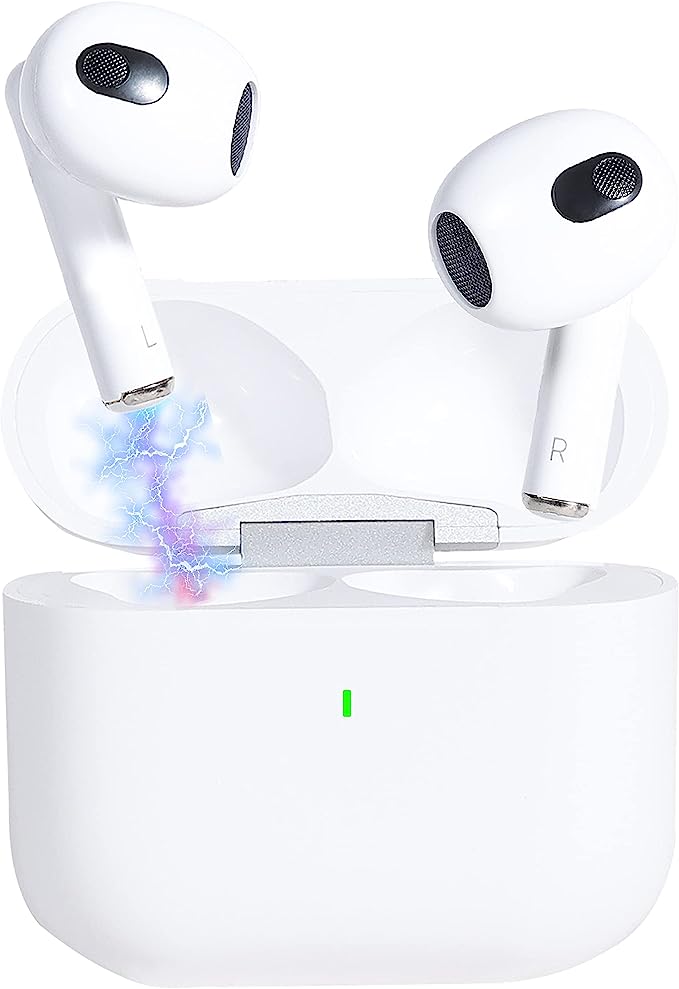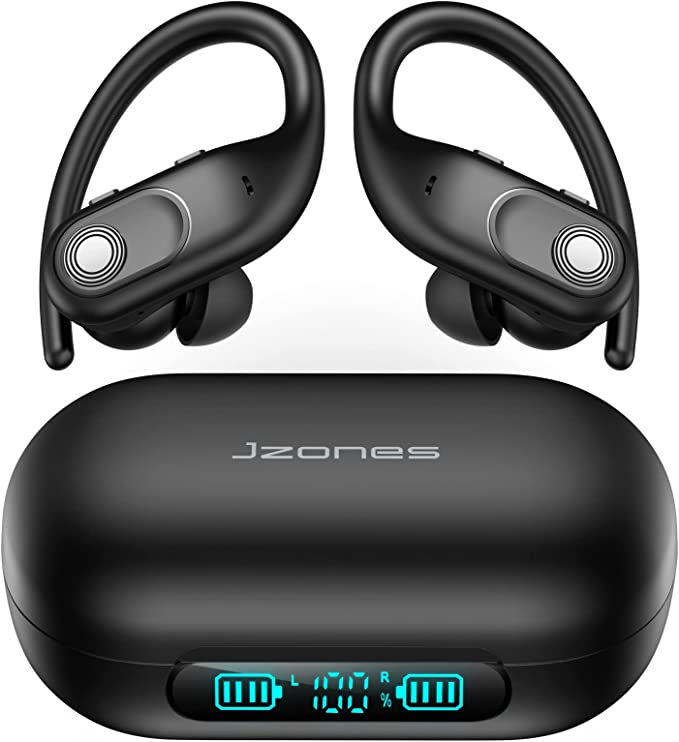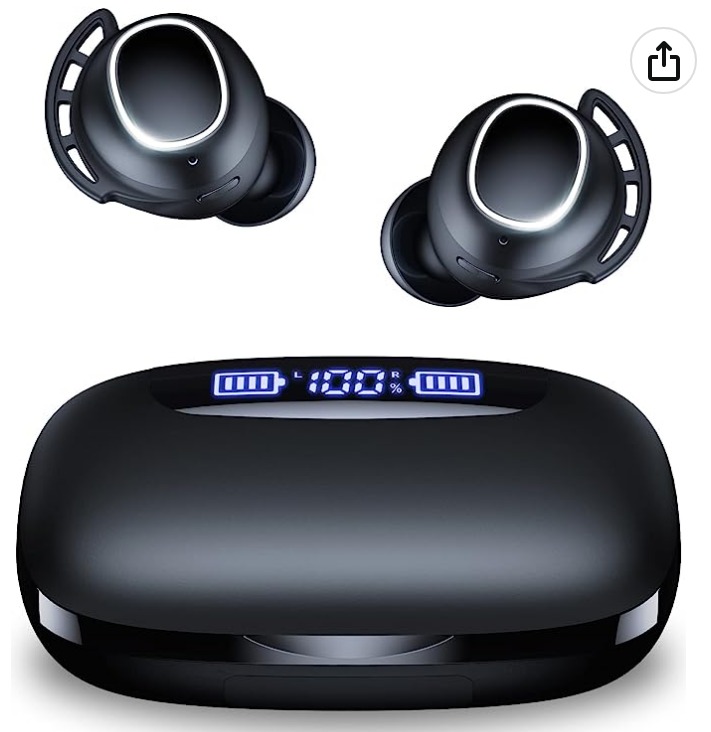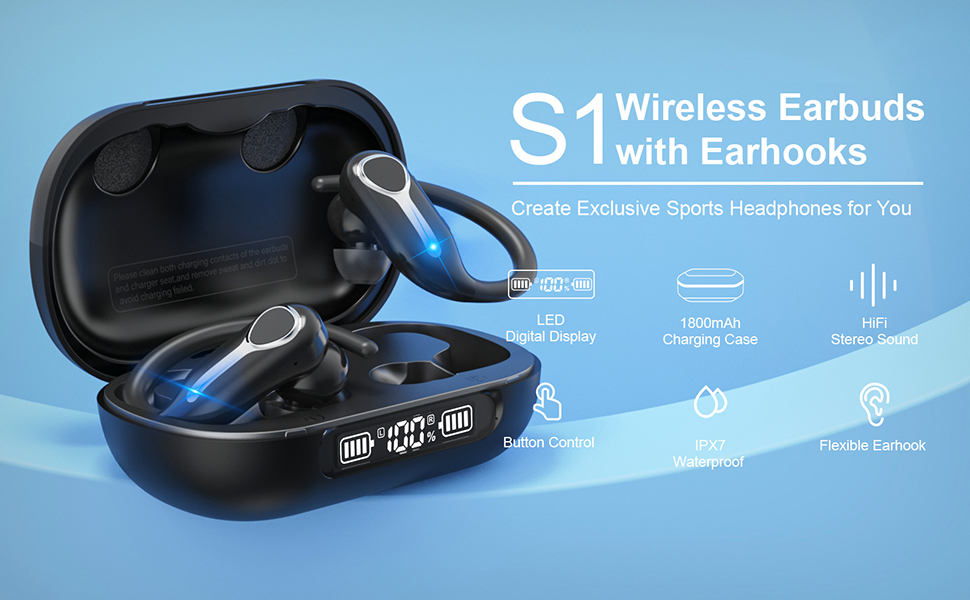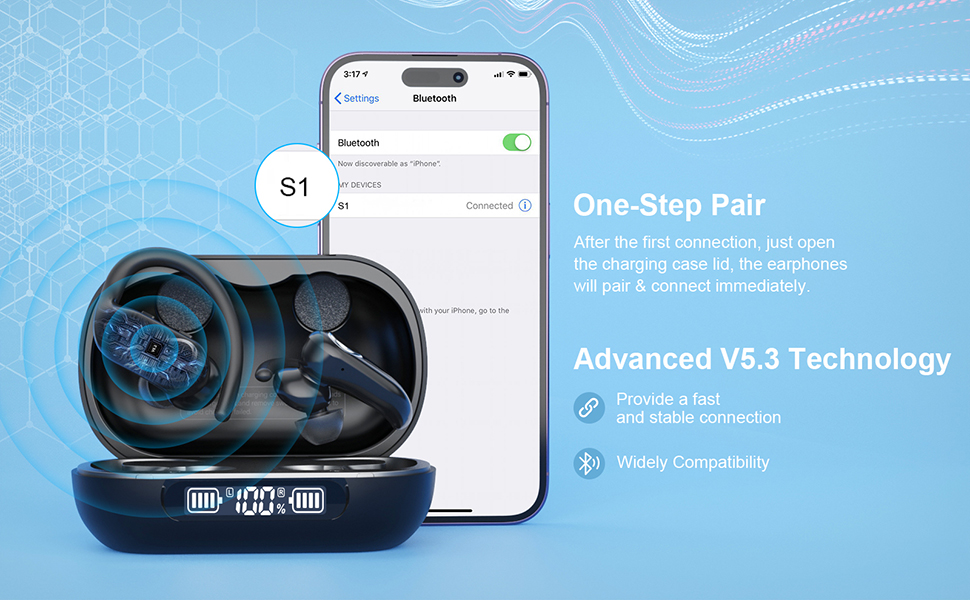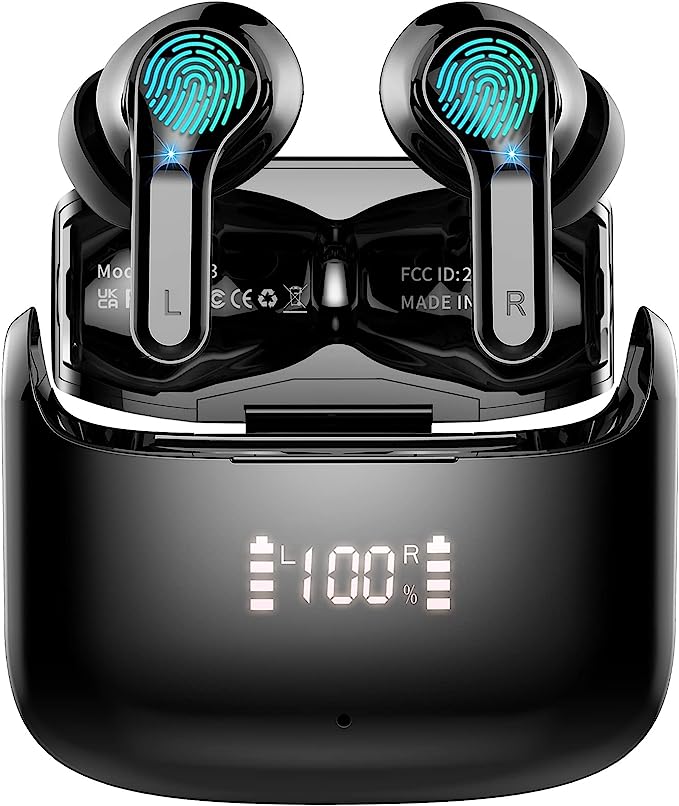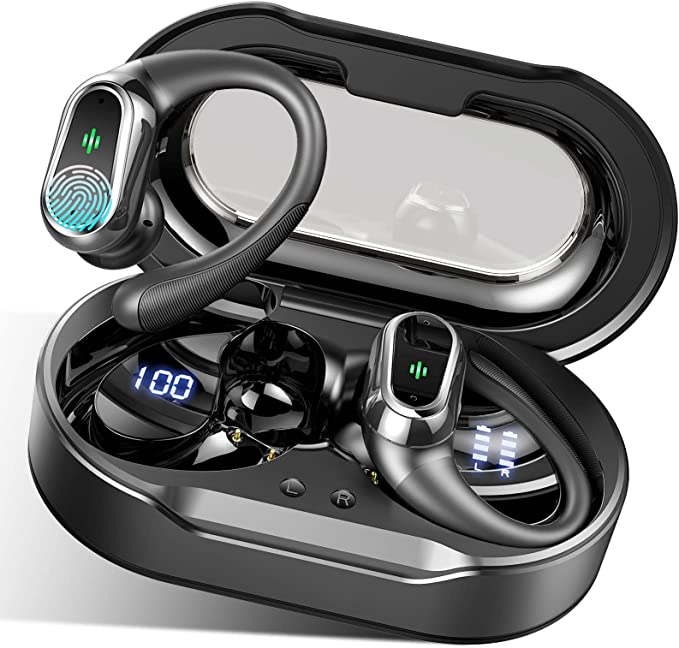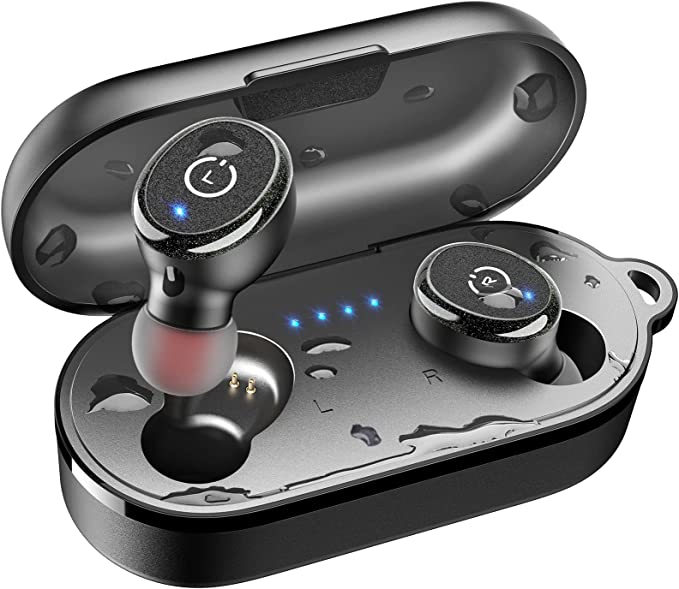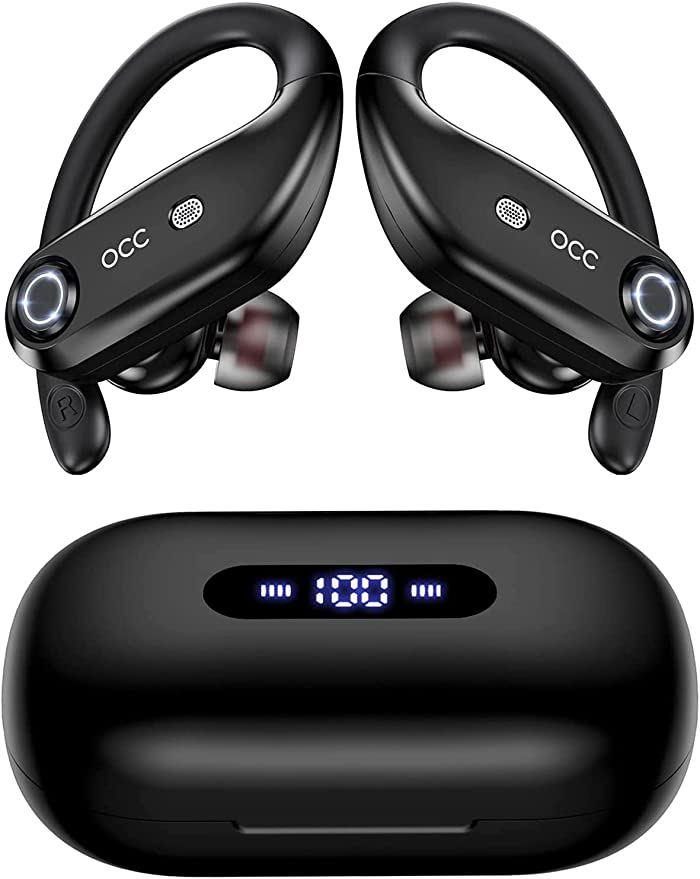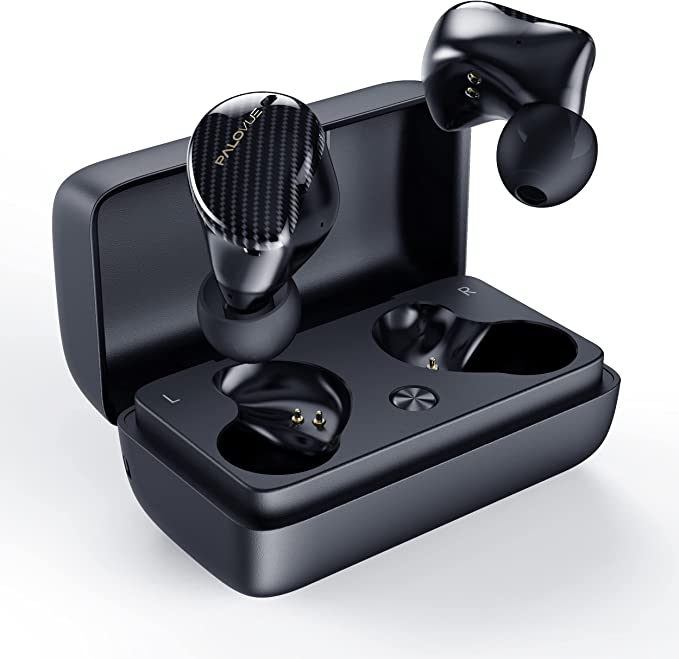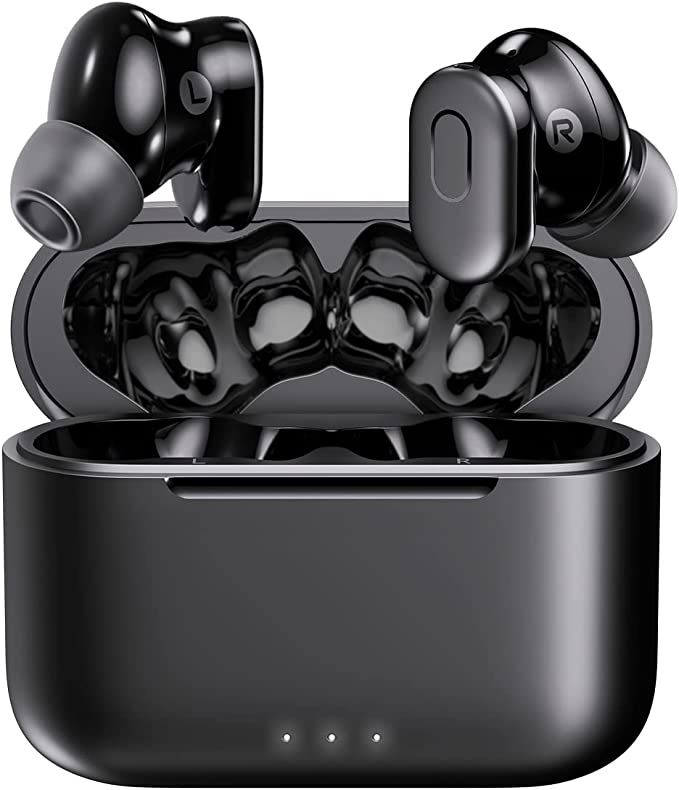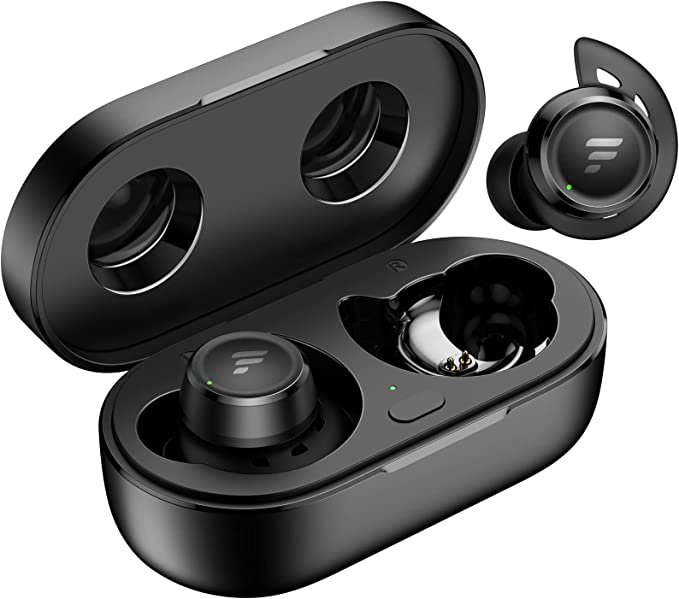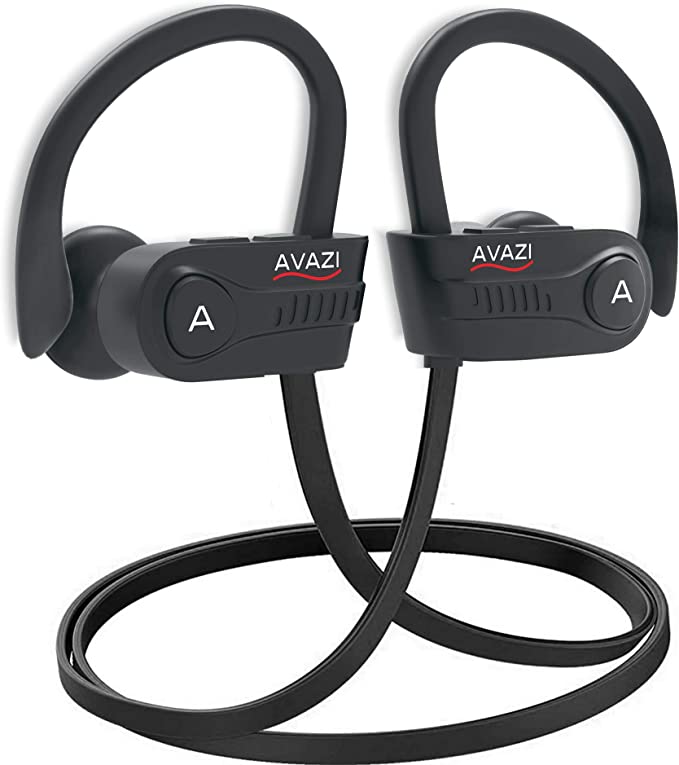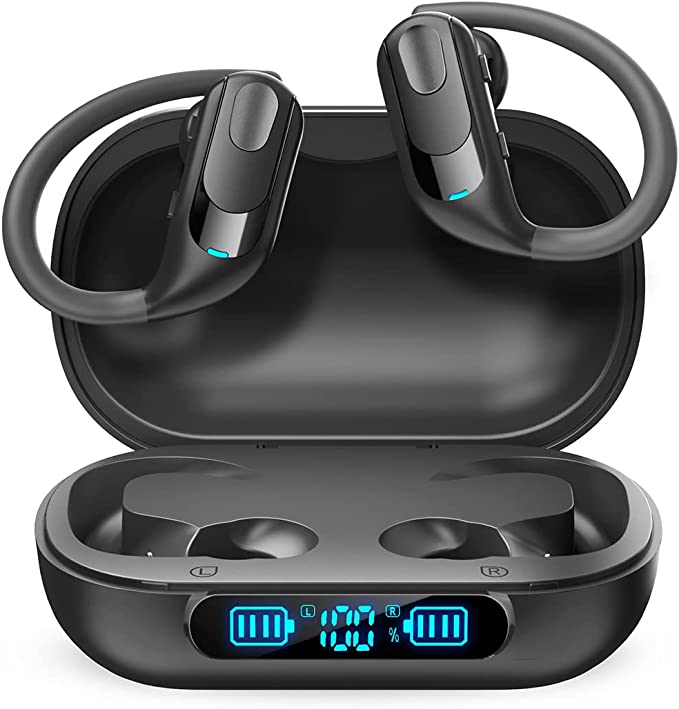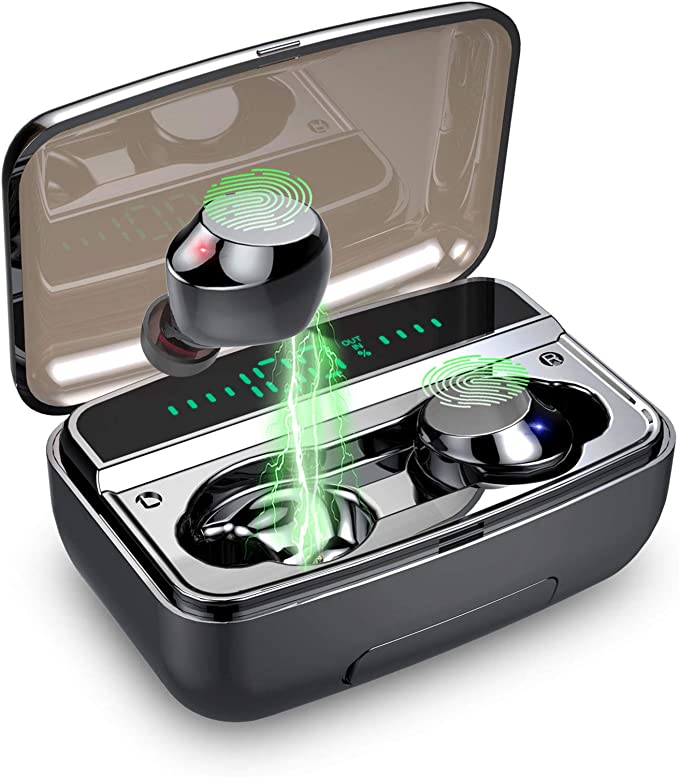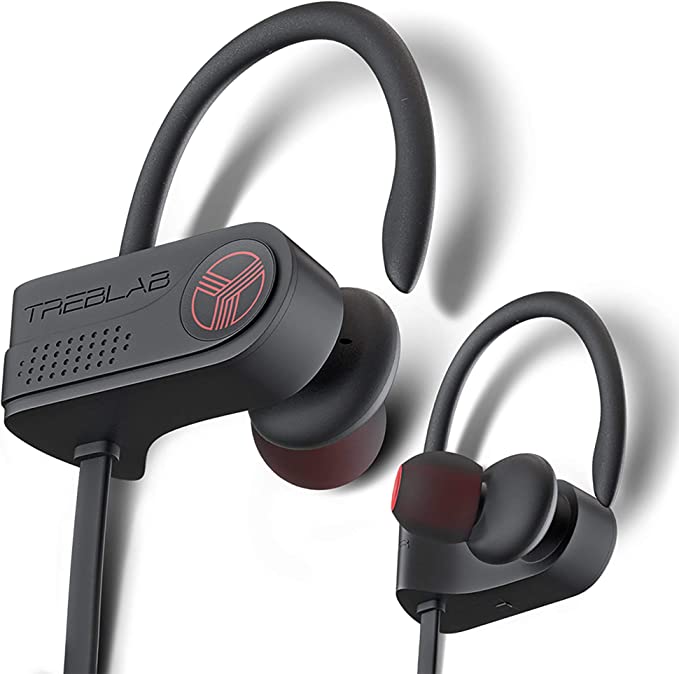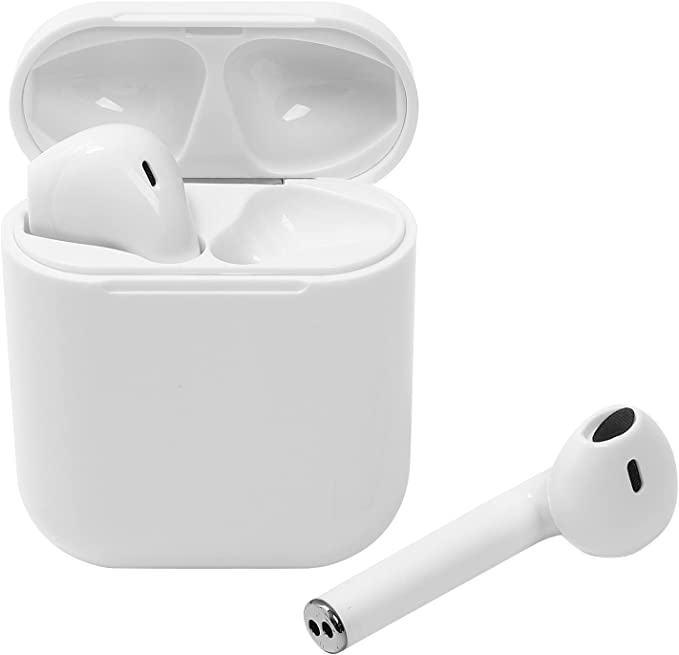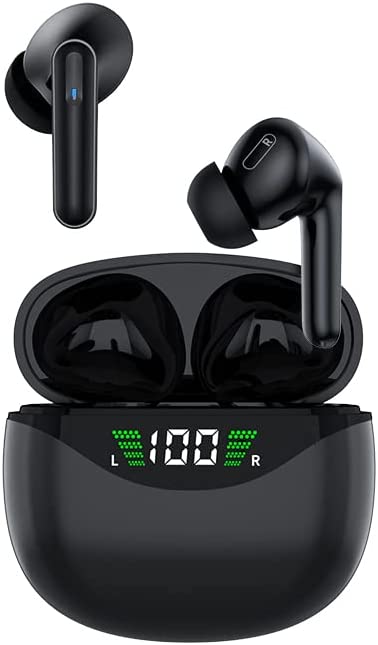PSIER Bluetooth Headphones: Your Ultimate Workout Companion with Superior Sound
Update on March 20, 2025, 5:10 p.m.
The joy of a good workout, powered by your favorite music, is a feeling many of us cherish. But that feeling can quickly evaporate when your earbuds refuse to cooperate. Slipping, sliding, popping out entirely – the struggle with ill-fitting headphones during exercise is a common frustration. And even if they stay in, subpar sound quality or a sudden downpour can quickly ruin the experience. But what makes a good pair of sports headphones? It’s more than just clever marketing; it’s a blend of physics, engineering, and an understanding of the human body.

The Foundation: Understanding Sound and Digital Audio
Before we dive into the specifics of sports headphones, let’s lay the groundwork by understanding how sound itself works. Sound is, fundamentally, vibration. When an object vibrates, it creates pressure waves in the surrounding medium (usually air). These waves travel to our ears, where they’re interpreted as sound.
The frequency of these waves – how many waves pass a point per second – determines the pitch of the sound. We measure frequency in Hertz (Hz). Humans can typically hear sounds between 20 Hz (very low bass) and 20,000 Hz (very high treble). The amplitude of the waves, or the intensity of the pressure change, determines the loudness of the sound.
But how do we get these sound waves into our headphones? That’s where digital audio comes in. In the analog world, sound is a continuous wave. To store and transmit it digitally, we need to convert it into a series of numbers. This is done through a process called sampling.
Imagine taking snapshots of the sound wave at regular intervals. The sampling rate is how many snapshots we take per second. The higher the sampling rate, the more accurately we capture the original sound wave. Common sampling rates include 44.1 kHz (used for CDs) and 48 kHz (used for many digital videos).
Each snapshot also needs to capture the amplitude of the wave at that moment. This is represented by the bit depth. A higher bit depth allows for a wider range of possible amplitude values, resulting in a more accurate representation of the sound.
Staying Put: The Science of Secure-Fit Earbuds
Now, let’s tackle the problem of earbuds that constantly fall out. This isn’t just about annoyance; it’s about ergonomics – the science of designing products to fit the human body. Our ears are incredibly diverse in shape and size. What fits one person perfectly might be a nightmare for another.
The outer ear, or pinna, has a complex structure with various ridges and curves. A well-designed ear hook, like the one featured on the PSIER headphones, leverages these features – specifically, the antihelix and antitragus – to create a secure anchor point. The ear hook wraps around the back of the ear, distributing pressure and preventing the earbud from being easily dislodged, even during vigorous movement. Material is crucial, a soft, pliable silicone is often used for ear tips and hooks because it conforms to the shape of the ear and provides a comfortable, yet secure, grip.
The inclusion of multiple ear tip sizes, as seen with the PSIER headphones (which offer four sizes), is crucial. This allows users to customize the fit to their specific ear canal size, further enhancing stability and comfort. A proper seal within the ear canal is not only essential for keeping the earbuds in place, but also for optimal sound quality, particularly bass response.
The Wireless Revolution: Bluetooth Technology Explained
Wireless headphones rely on Bluetooth, a short-range wireless communication technology. It operates in the 2.4 GHz frequency band, the same band used by Wi-Fi and many other devices. Bluetooth uses a technique called frequency-hopping spread spectrum, which means it rapidly switches between different frequencies within this band. This helps to minimize interference from other devices and maintain a stable connection.
The PSIER headphones utilize Bluetooth 5.3, the latest iteration of this technology. Compared to earlier versions, Bluetooth 5.3 offers several key advantages:
- Lower Power Consumption: Bluetooth 5.3 uses significantly less power, which translates to longer battery life for your headphones.
- Enhanced Connection Stability: Improved connection stability means fewer dropouts and a more reliable listening experience, even in environments with a lot of wireless interference.
- Faster Connection Speeds: While the primary benefit isn’t necessarily faster audio transmission (audio data rates are relatively low), faster connection speeds improve the initial pairing process and reduce latency.
- Connection Subrating: This feature improves the user’s experience while switching between low and high duty cycle connections.
Decoding Sound: Audio Codecs and Their Impact
While Bluetooth provides the wireless connection, it’s the audio codec that determines how the audio data is compressed and transmitted. Think of a codec as a language that your phone and headphones use to communicate. Both devices need to speak the same language for the audio to be understood.
Unfortunately, the provided product information doesn’t specify which audio codecs the PSIER headphones support. This is a crucial piece of information. Here’s a brief overview of common Bluetooth audio codecs:
- SBC (Subband Coding): This is the mandatory, default codec for all Bluetooth audio devices. It’s the lowest common denominator, offering decent but not exceptional sound quality. It prioritizes low computational complexity over audio fidelity.
- AAC (Advanced Audio Coding): AAC is a more advanced codec that generally offers better sound quality than SBC at similar bitrates. It’s widely supported by Apple devices.
- aptX (various versions): aptX is a family of codecs developed by Qualcomm, designed to provide higher-quality audio than SBC. There are different versions of aptX, including aptX, aptX HD, and aptX Adaptive, each offering varying levels of sound quality and latency.
Without knowing which codecs the PSIER headphones support, it’s difficult to definitively assess their audio quality. However, the presence of 11mm dynamic drivers does suggest a focus on delivering powerful sound. Dynamic drivers are the most common type of headphone driver. They work by using a diaphragm attached to a voice coil, which is suspended in a magnetic field. When an electrical signal passes through the voice coil, it creates a magnetic field that interacts with the permanent magnet, causing the diaphragm to vibrate and produce sound. A larger driver, like the 11mm one in the PSIER headphones, can generally move more air, resulting in a more powerful and potentially deeper bass response.
Weathering the Storm: IPX Ratings and Waterproofing
For sports headphones, resistance to sweat and rain is essential. The PSIER headphones boast an IPX7 waterproof rating. But what does this really mean?
IPX ratings are part of the International Protection Marking system, which classifies the degree of protection provided by enclosures for electrical equipment. The “X” in IPX7 indicates that the device has not been formally tested for dust resistance. The “7” indicates the level of protection against water.
Specifically, IPX7 means the device can withstand immersion in up to 1 meter (3.3 feet) of water for 30 minutes. This provides excellent protection against sweat and rain, making the headphones suitable for intense workouts and outdoor activities. However, it’s important to note that IPX7 does not mean the headphones are suitable for swimming. The pressure and movement involved in swimming can exceed the limits of the IPX7 rating.
The waterproofing itself is typically achieved through a combination of physical seals, gaskets, and sometimes hydrophobic coatings on internal components. These coatings repel water, preventing it from reaching sensitive electronics.

Power Up: Battery Life and Charging Technology
A dead battery can abruptly end your workout soundtrack. The PSIER headphones claim a 15-hour playtime and a 250-hour standby time, with a 1.5-hour charge time. These figures are impressive, especially for a pair of wireless earbuds.
Battery life is primarily determined by the battery’s capacity, measured in milliampere-hours (mAh). The higher the mAh rating, the more energy the battery can store. The efficiency of the Bluetooth chipset (as mentioned earlier, Bluetooth 5.3 is more energy-efficient) and the volume level at which you listen to music also significantly impact battery life.
The 1.5-hour charge time suggests the use of some form of fast-charging technology, although the specifics aren’t provided. Fast charging typically involves increasing the voltage or current delivered to the battery to speed up the charging process. However, careful management of heat and battery health is crucial to prevent damage during fast charging.
Beyond the Basics: Other Considerations for Sports Headphones
While the core features discussed above are essential, other factors can contribute to a great sports headphone experience:
- Button Controls: The PSIER headphones feature button controls, allowing you to play/pause music, answer calls, and access voice assistants without needing to reach for your phone. This is a convenient feature for workouts.
- Ambient Sound Mode/Transparency Mode: Some headphones offer an “ambient sound” or “transparency” mode, which uses microphones to pick up external sounds and pipe them into the headphones. This can be useful for safety when running or cycling outdoors, allowing you to hear traffic and other environmental cues. The provided information doesn’t mention this feature for the PSIER headphones.
- Noise Cancellation: Active Noise Cancellation (ANC) uses microphones and electronic processing to reduce ambient noise. This can be beneficial in noisy gyms or for focusing on your music. The provided information does not indicate that the PSIER features ANC.
The Future of Sound: What’s Next for Sports Audio?
The field of sports audio is constantly evolving. We can expect to see continued improvements in battery life, sound quality, and water resistance. Some emerging trends include:
- Bone Conduction Technology: Bone conduction headphones transmit sound vibrations through the bones of the skull, bypassing the eardrum. This allows you to hear your music while still being aware of your surroundings.
- Biometric Sensors: Some headphones are starting to integrate biometric sensors, such as heart rate monitors, to track fitness data.
- AI-Powered Features: Artificial intelligence could be used to personalize sound profiles, automatically adjust noise cancellation levels, or even provide real-time coaching based on your workout data.
- Improved Sustainability: Use more eco-friendly materials.
The PSIER Bluetooth Headphones, with their focus on secure fit, long battery life, and IPX7 waterproofing, represent a solid offering in the current sports headphone market. However, clarifying the supported audio codecs would provide a more complete picture of their audio capabilities. As technology continues to advance, we can expect even more innovative and feature-rich sports headphones in the future.

